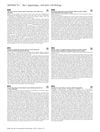WIF1 Is Expressed by Stem Cells of the Human Interfollicular Epidermis and Acts to Suppress Keratinocyte Proliferation
January 2013
in “
Journal of Investigative Dermatology
”
TLDR WIF1 helps keep skin stem cells inactive to prevent excessive cell growth.
The study identified Wnt inhibitory factor-1 (WIF1) as a marker for keratinocyte stem cells (KSCs) in the human interfollicular epidermis, where it played a crucial role in suppressing keratinocyte proliferation by maintaining stem cell quiescence. WIF1 was highly expressed in non-cycling KSCs and inhibited the Wnt signaling pathway, which is essential for cell proliferation. It achieved G1 cell cycle arrest by downregulating Wnt target genes, leading to the accumulation of cell cycle regulators p21 and p27. This mechanism was necessary for keeping interfollicular stem cells quiescent and preventing excessive proliferation, thus maintaining epidermal homeostasis.

